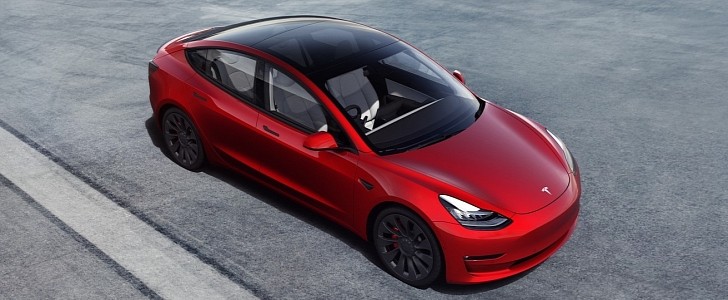Tesla has been having some issues with numbers. After claiming that the 53,822 currently with FSD access were “nearly 60,000,” it inflated a more serious number in Australia. Thanks to Joshua Dowling – from Drive.com.au – we discovered that it counted 2,960 units more than it should to Tesla Model 3 sales in that country.
That made Tesla report 15,054 units of that EV sold last year. If that were correct, the Model 3 would have beaten the Toyota Camry as the best-selling mid-size sedan in Australia, which no other vehicle did in 28 years.
Dowling discovered that after comparing these figures to registration numbers from the National Transport Commission. Instead of 15,054 Model 3s, only 12,058 Model 3 units were registered in Australia in 2021. Slight differences are not uncommon between deliveries and sales, but 2,996 – nearly 3,000 – is far from negligible.
The journalist continued to question these numbers. It would seem that the registration numbers were wrong if it was not for the Electric Vehicle Council to humbly admit that the numbers it got directly from Tesla were plain wrong. This council is the electric car lobby group in Australia, and it released a message stating that the correct number of Tesla Model 3s sold was 12,094.
With that, the Electric Vehicle Council also had to update the number of electric vehicles sold in Australia. Instead of 24,078, the right number would be 20,665, which is also strange. The difference here is 3,413 instead of the 2,960 EVs Tesla added to the Model 3’s total by “human error,” according to the council. What about these 453 EVs that should not be there?
There’s nothing on the organization’s website about these other extra electric cars that should not be there. We’ll ask them where they came from, but it may be fair to suppose they refer to other Tesla vehicles. The Model S and Model X are also sold there. The Model Y page in Australia has a button stating “Stay Updated” instead of “Order Now.”
That did not sit well with the automotive industry. An unnamed source quoted by Dowling said that Tesla has to submit to the same counting methods all other companies adopt and that “it's time for Tesla to grow up and stop acting like a startup.”
Ironically, Tesla also blames “human errors” as its motivation to pursue “self-driving” cars. If it were as concerned with them in things it could truly control, it would avoid embarrassing the Electric Vehicle Council with wrong numbers and please customers by delivering better cars.
Dowling discovered that after comparing these figures to registration numbers from the National Transport Commission. Instead of 15,054 Model 3s, only 12,058 Model 3 units were registered in Australia in 2021. Slight differences are not uncommon between deliveries and sales, but 2,996 – nearly 3,000 – is far from negligible.
The journalist continued to question these numbers. It would seem that the registration numbers were wrong if it was not for the Electric Vehicle Council to humbly admit that the numbers it got directly from Tesla were plain wrong. This council is the electric car lobby group in Australia, and it released a message stating that the correct number of Tesla Model 3s sold was 12,094.
With that, the Electric Vehicle Council also had to update the number of electric vehicles sold in Australia. Instead of 24,078, the right number would be 20,665, which is also strange. The difference here is 3,413 instead of the 2,960 EVs Tesla added to the Model 3’s total by “human error,” according to the council. What about these 453 EVs that should not be there?
There’s nothing on the organization’s website about these other extra electric cars that should not be there. We’ll ask them where they came from, but it may be fair to suppose they refer to other Tesla vehicles. The Model S and Model X are also sold there. The Model Y page in Australia has a button stating “Stay Updated” instead of “Order Now.”
That did not sit well with the automotive industry. An unnamed source quoted by Dowling said that Tesla has to submit to the same counting methods all other companies adopt and that “it's time for Tesla to grow up and stop acting like a startup.”
Ironically, Tesla also blames “human errors” as its motivation to pursue “self-driving” cars. If it were as concerned with them in things it could truly control, it would avoid embarrassing the Electric Vehicle Council with wrong numbers and please customers by delivering better cars.























